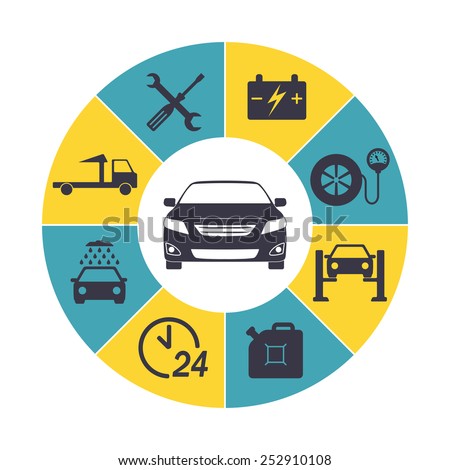Realizing The Relevance Of Your Cars And Truck'S Warning Signals: What They Actually Represent
Realizing The Relevance Of Your Cars And Truck'S Warning Signals: What They Actually Represent
Blog Article
Personnel Author-Boye Corbett
When you're behind the wheel, those beautiful warning lights on your dashboard can be a bit puzzling. Do you recognize what they're attempting to inform you about your car's health and wellness? Comprehending the importance of these lights is vital for your security and the durability of your lorry. So, the following time one of those lights appears, wouldn't you intend to decode its message properly and take the needed steps to address it?
Common Warning Lights and Interpretations
Identify common warning lights in your auto and understand their significances to make sure secure driving.
One of the most typical caution lights consist of the check engine light, which signals concerns with the engine or discharges system. If this light begins, it's vital to have your car examined immediately.
The oil pressure cautioning light shows low oil stress, calling for immediate attention to stop engine damages.
A blinking battery light might recommend a faulty charging system, possibly leaving you stranded otherwise dealt with.
The tire pressure monitoring system (TPMS) light signals you to low tire pressure, impacting lorry security and fuel effectiveness. Ignoring this might cause unsafe driving conditions.
The abdominal light indicates a trouble with the anti-lock braking system, jeopardizing your capacity to quit promptly in emergency situations.
Lastly, the coolant temperature warning light warns of engine getting too hot, which can result in severe damage otherwise fixed promptly.
Understanding these usual warning lights will assist you address issues immediately and maintain risk-free driving problems.
Value of Prompt Interest
Recognizing the typical caution lights in your vehicle is only the very first step; the significance of promptly addressing these warnings can not be stressed enough to guarantee your safety and security when traveling.
When a caution light brightens on your dashboard, it's your car's means of communicating a possible problem that requires interest. Overlooking these cautions can bring about extra severe troubles in the future, jeopardizing your safety and possibly costing you much more in repairs.
Trigger attention to advising lights can prevent break downs and accidents. As an example, a blinking check engine light might indicate a misfire that, if left neglected, might create damages to the catalytic converter. Addressing this quickly can save you from a pricey fixing.
Likewise, a brake system warning light may signify low brake fluid or worn brake pads, crucial parts for your security when driving.
DIY Troubleshooting Tips
If you see a caution light on your control panel, there are a few DIY troubleshooting pointers you can try prior to seeking specialist assistance.
The first step is to consult your auto's manual to recognize what the certain caution light shows. Occasionally linked site can be as simple as a loosened gas cap causing the check engine light. Tightening the gas cap may resolve the issue.
Read More At this website is a reduced battery, which can cause numerous cautioning lights. Examining the battery links for corrosion and guaranteeing they're secure might repair the trouble.
If a caution light persists, you can try resetting it by detaching the cars and truck's battery for a few mins and then reconnecting it. Additionally, inspecting your lorry's fluid degrees, such as oil, coolant, and brake fluid, can aid troubleshoot alerting lights connected to these systems.
Final thought
To conclude, comprehending your cars and truck's caution lights is vital for keeping your automobile running efficiently and securely. By quickly resolving these signals and knowing what they suggest, you can stay clear of costly fixings and prospective break downs.
Bear in mind to consult your automobile's manual for certain details on each alerting light and do something about it as necessary to ensure a hassle-free driving experience.
Remain notified, remain risk-free when traveling!
